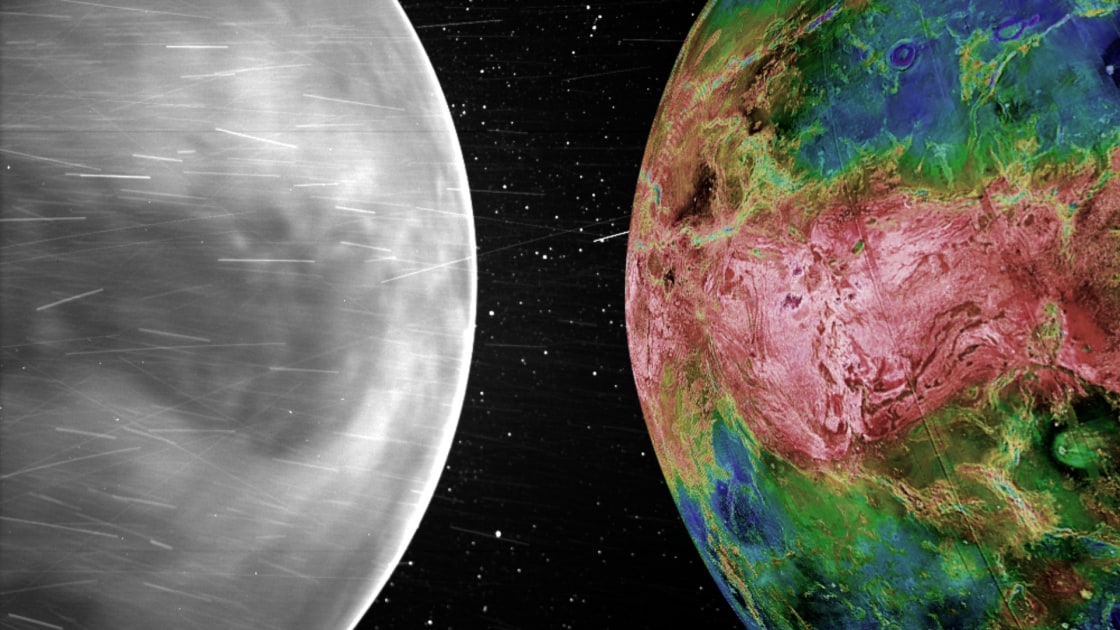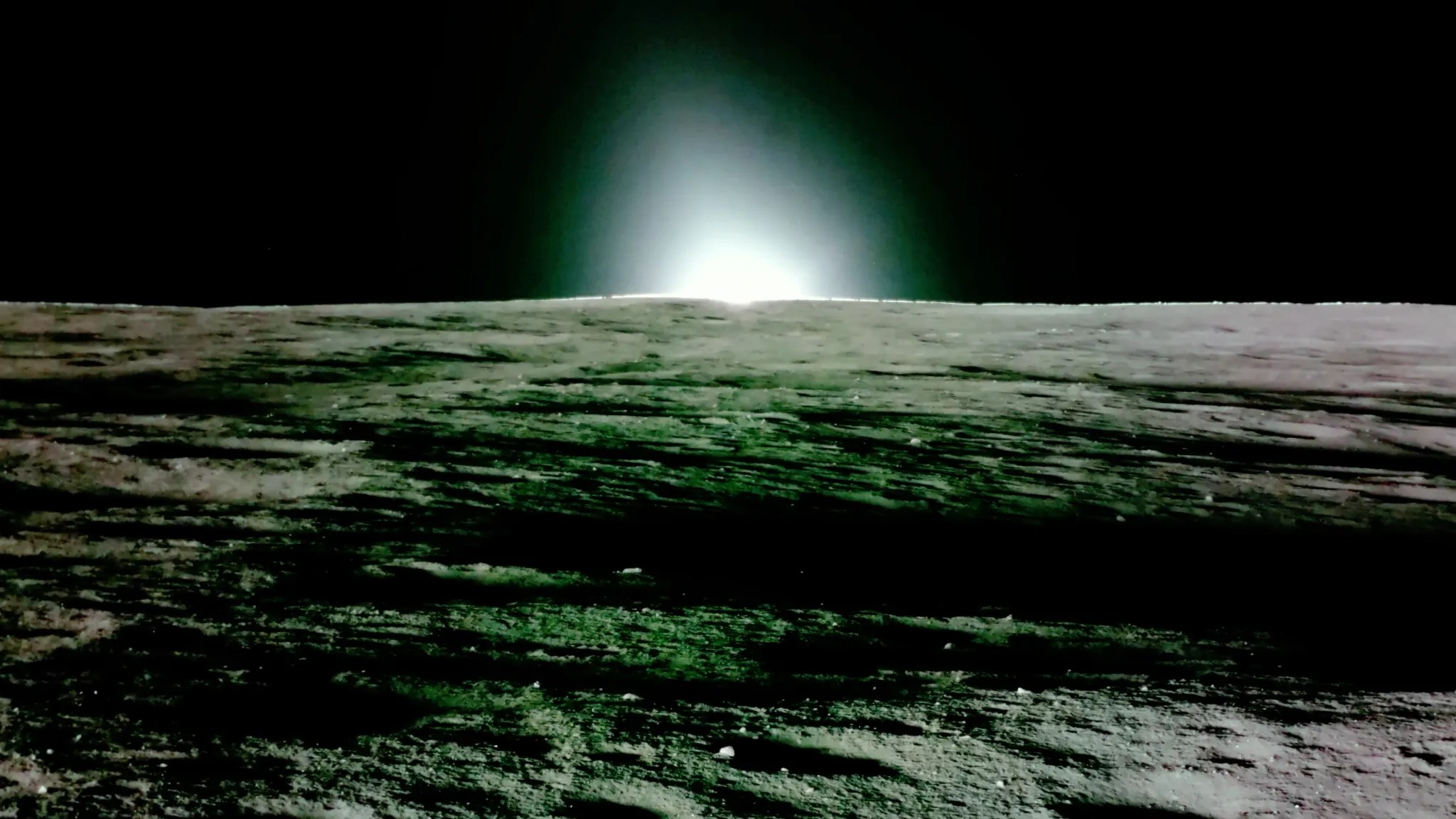When you purchase through data link on our site , we may take in an affiliate deputation . Here ’s how it work .
sensational images crack byNASA ’s Parker Solar Probe have given the very first visible low-cal glimpse of Venus ' red - hot surface , revealing continents , plains and plateaus on the inhospitable volcanic creation .
peer beneath the thick and toxic Venusian cloud with the Wide - field Imager for Parker Solar Probe ( WISPR ) instrument , NASA scientist spotted a bevy of geological features lit up in the faint glow of Venus ' nightside control surface , alongside a luminescent halo ofoxygenin the satellite ’s atmosphere .

NASA captured the images during the fourth flyby of the Parker Solar Probe.
Related:6 reasons astrobiologists are hold out hope for biography on Mars
The groundbreaking ceremony image , accept during the Parker Solar Probe ’s fourth flyby of Venus on the way to the sunshine , will give scientists valuable insights into the scorching planet ’s geology and minerals , and they could bring out more about how Venus became so inhospitable while life onEarthflourished . NASA scientist print their psychoanalysis of the images Feb. 9 in the journalGeophysical Research Letters .
" Venus is the third bright matter in the sky , but until recently we have not had much selective information on what the control surface search like because our view of it is blocked by a thickset aura , " study track writer Brian Wood , a physicist at the Naval Research Laboratory in Washington , D.C.,said in a statement . " Now , we last are seeing the surface in seeable wavelengths for the first time from place . "

A side by side comparison of Venus’s surface as viewed by the Parker Solar Probe (left) and the Magellan mission (right). The surface features in both images match.
Venus ' aerofoil has been imaged before , but this is the first time it ’s been snapped in light seeable to the human eye . This is because the major planet is shroud by a dense toxic cloak of sulfuric acid and carbon dioxide , obstruct most light from escaping .
The Parker Probe ’s WISPR official document was never design with imaging Venus in mind — it was build to study the Sunday ’s atmospheric state and solar wind — but the instrument ’s sensitivity enabled it to capture the lightheaded glow of red spark emitted by the planet . During the daytime , this red light is drowned out by sunshine reflect off Venus ' cloud , but the nighttime flyby enabled the probe to pick up the planet ’s docile incandescence , and the stunning geographical characteristic on its aerofoil .
— 10 interesting place in the solar system we ’d like to visit

— Here ’s what NASA ’s Opportunity rover watch before ' lights out '
— Voyager to Mars Rover : NASA ’s 10 majuscule innovations
As WISPR detected wavelengths between the seeable and theinfraredspectrums , it also enable scientists to count on Venus ' surface temperature . And no surprise , it ’s hot . At 863.33 degrees Fahrenheit ( 462 degrees Celsius ) , the lava - swamp planet is the hottest planet in oursolar system , even at dark .

" The surface of Venus , even on the nightside , is about 860 degrees , " Wood said . " It ’s so hot that the rocky open of Venus is visibly glowing , like a piece of iron pulled from a forge . "
The new images will be canvas alongside past image of Venus — such as those captured by the 1975 Soviet Venera 9 landing commission ; NASA ’s 1990 Magellan mission ; and the Japanese space agency ’s Akatsuki commission — to help scientists understand how Venus develop to be so inhospitable . scientist do n’t hump if Venus was always as barren as it is today , and past research has suggested that the planet may have hosted weewee and even liveliness before it was smother by a hellish fog ofgreenhouse accelerator pedal , Live Science previously reported .
The Parker investigation is using Venus for " gravity assist " tactics to o.k. - tune the investigation ’s grade to the sun , and it will slingshot from the planet into a solar orbit in November 2024 . But this is n’t the last of NASA ’s plans for Venus . NASA ’s Veritas and Da Vinci missions will exposit the U.S. space agency ’s noesis of the planet ’s open by get off an orbiter and an atmospherical investigation to the planet . These missions are expect to launch sometime between 2028 and 2030 . TheEuropean Space Agencywill also beam its own orbiter , EnVision , to scan the planet ’s aerofoil . Together , the three could unlock the enigma of Venus ' past , and perchance even offer a scary monition for one of Earth ’s potential future .

in the beginning published on Live Science .












